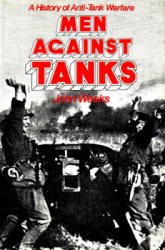The official index alone, however, does not tell the whole story. A basic proposition of economics is that if a price ceiling is set below the free market equilibrium, a scramble for supplies will occur that will produce attempts to evade the ceiling. There were innumerable examples during the war. In some cases, evasion took the form of quality deterioration: Fat was added to hamburger, coarse fabrics were substituted for finer ones, and maintenance on rent-controlled apartments was reduced. Quality deterioration could be limited by regulations that specified the exact content of a product, such as the specified butterfat content of milk, but such regulations tended to get longer and longer and became a problem in themselves. In one famous case, Lou Maxon, an OPA official, resigned in 1943, complaining about what he saw as the antibusiness atmosphere at OPA. Many of Maxon’s charges were exaggerated, but the six-page regulation specifying the content of fruit cakes, which he used to dramatize his charges, spoke to a real problem.
“Forced uptrading” was another problem caused by price controls. Before the war, manufacturers often offered buyers a choice between low-priced, low-quality items and high-priced, high-quality items. Typically, the high-priced lines carried higher profit margins but sold in smaller volumes. With wartime demand in all lines exceeding supply, manufacturers eliminated the lower-priced lines. This was fine for those consumers who wished to move up to the higher-priced item anyway, but for those who were forced to trade up, the difference between what they would have voluntarily paid for the high-priced line and what they were forced to pay because the low-priced line was eliminated was a hidden price increase.
The most startling form of evasion, although not the most frequent, was the black market. Here, buyers who were willing to pay more than the official price and sellers willing to sell for more would meet away from the prying eyes of the OPA. The black market took many forms, depending on the product and the enforcement effort being made by the OPA. In New York, there were “meat-easies,” much like the speakeasies that had flourished during prohibition, where one could buy extra meat but at prices much higher than those set by the OPA. After production of automobiles resumed at the end of the war, evasion of automobile price controls was widespread. Some of it occurred in the dealer’s showroom, where cash payments were often made on the side while official documents showed that the car had been sold at the OPA ceiling. A true black market also developed. In Leesville, South Carolina, for example, cars recently purchased from dealers were brought from all over the country to a huge lot where they were resold at black-market prices.




 World History
World History









